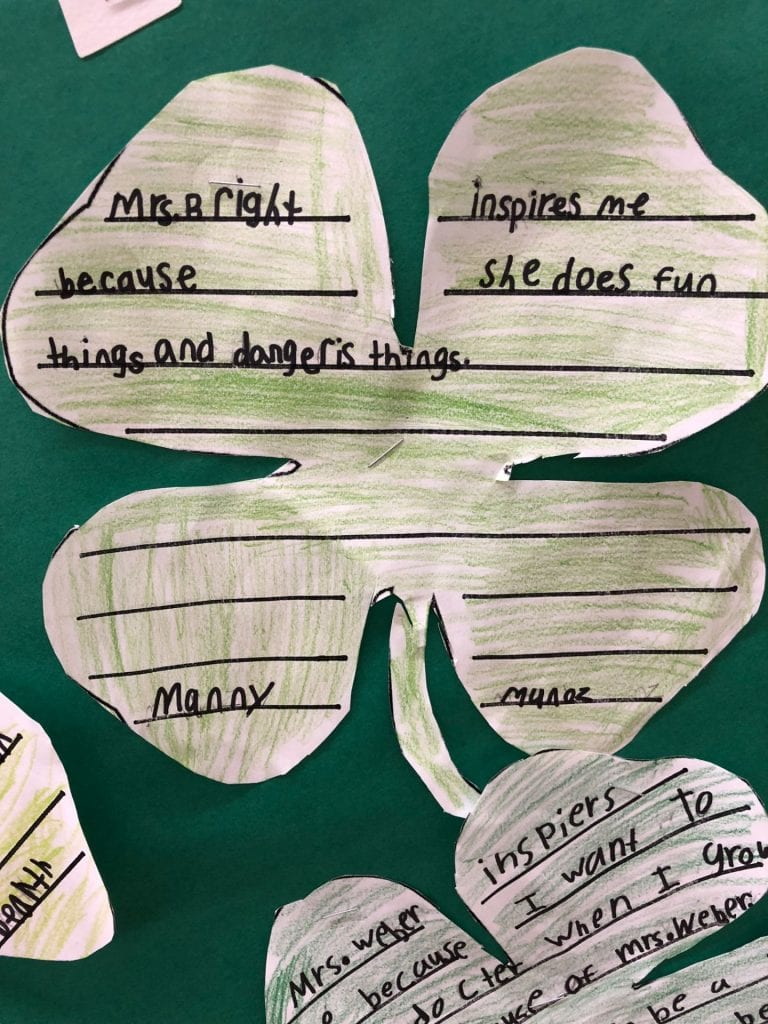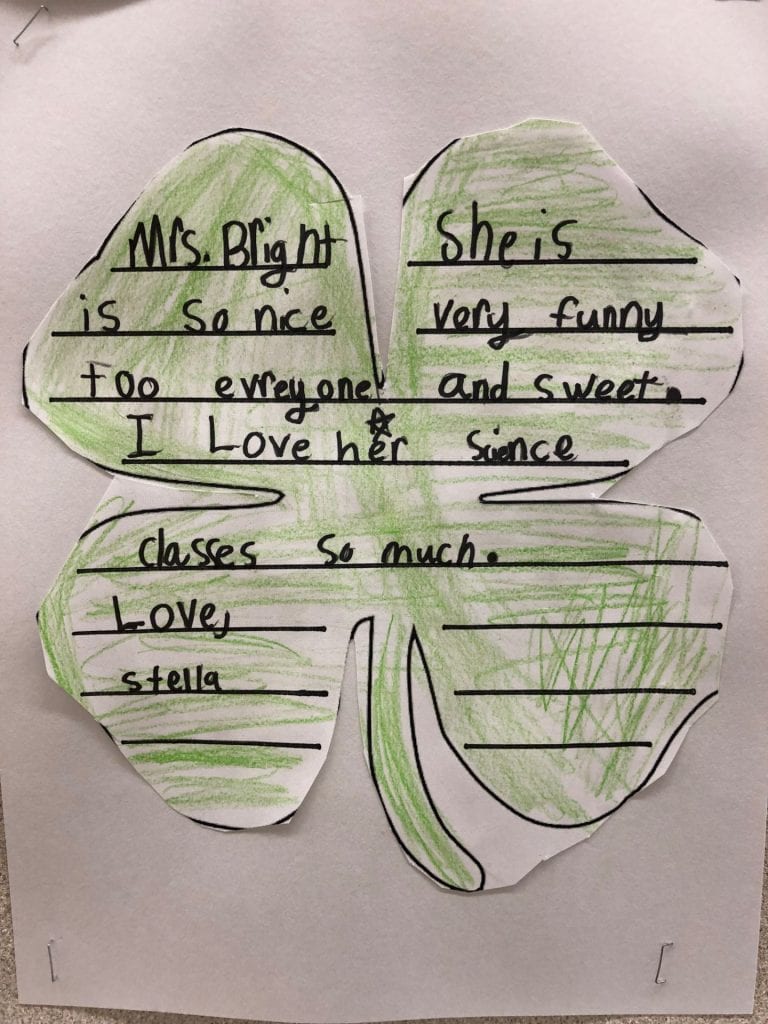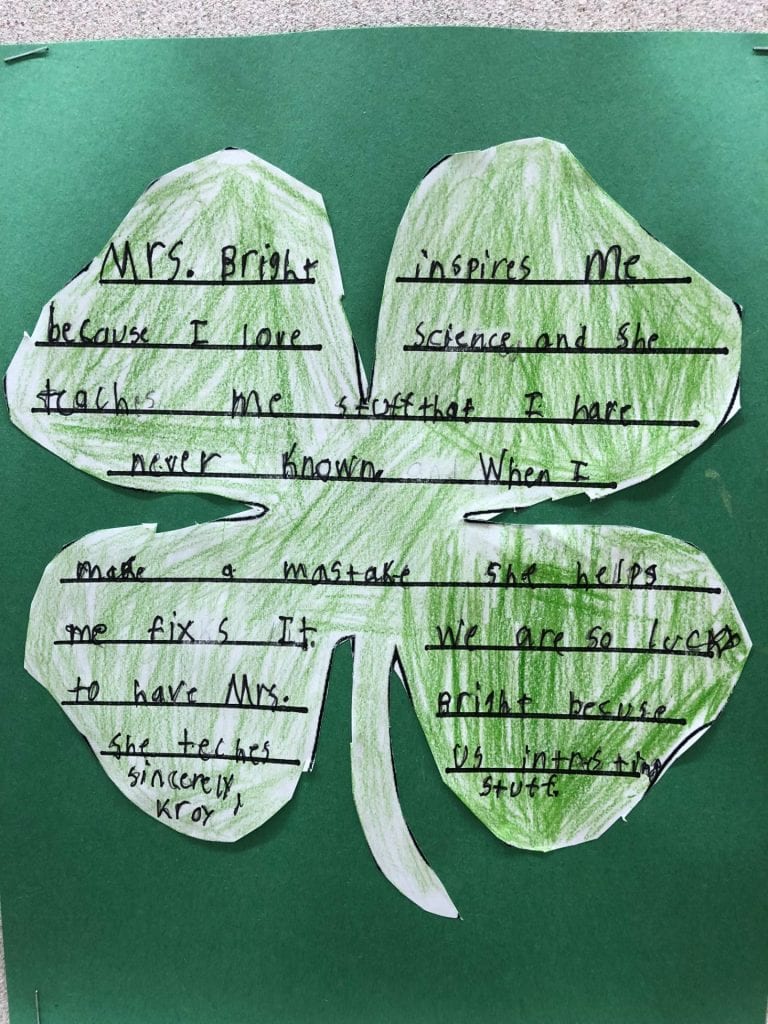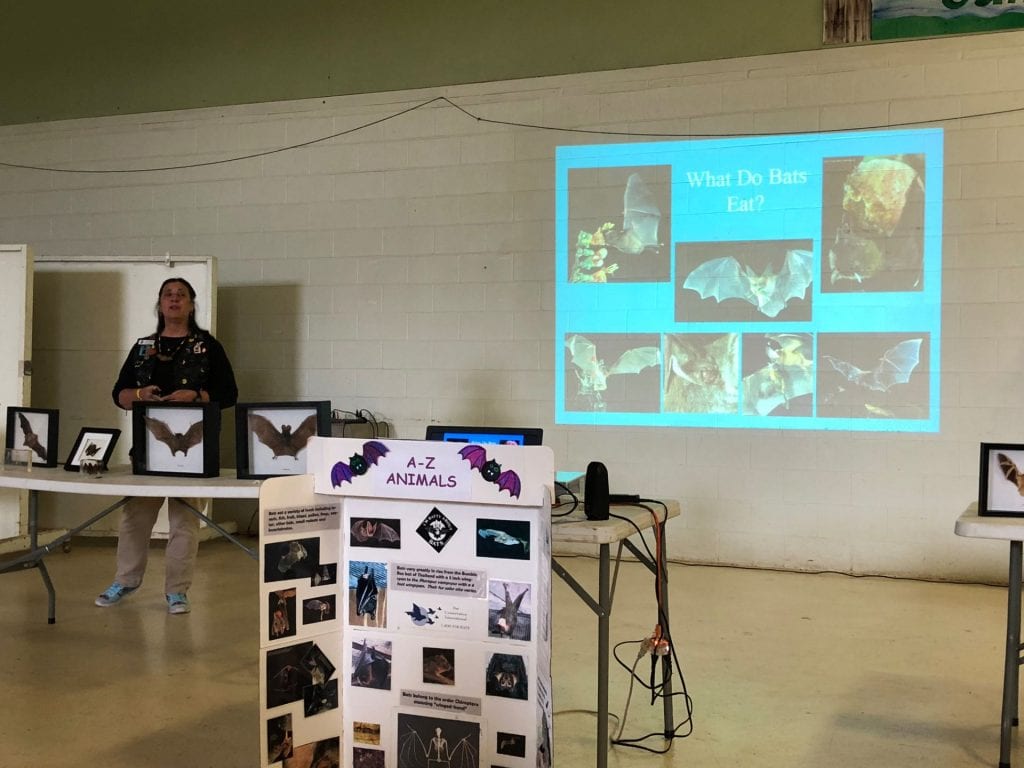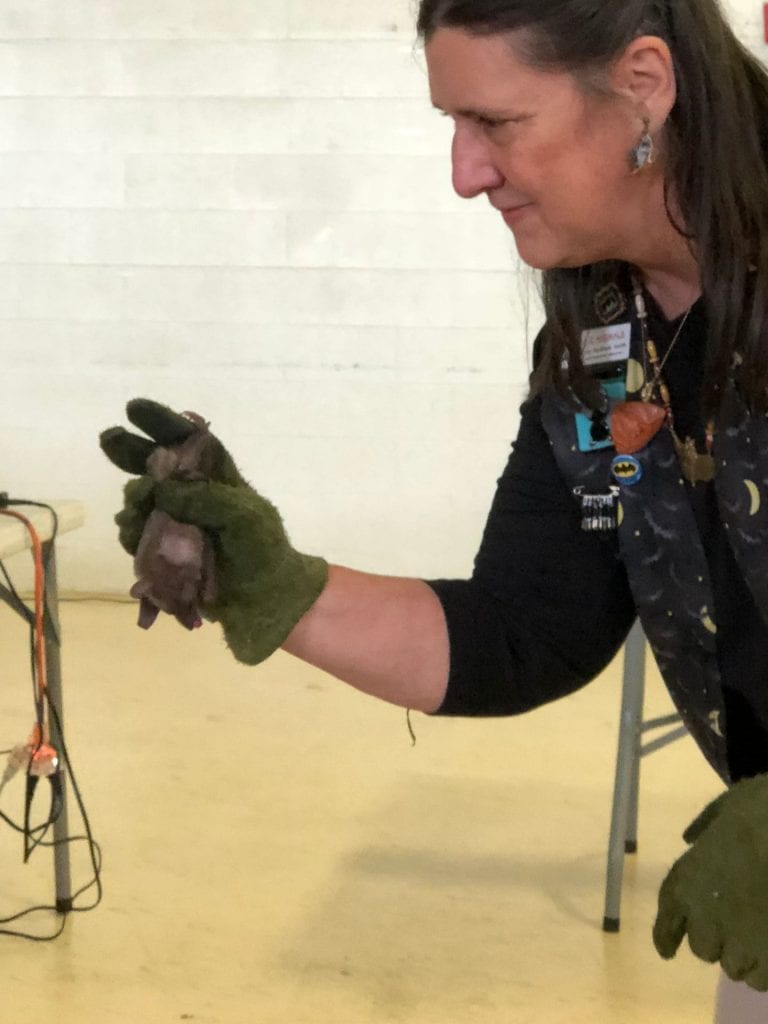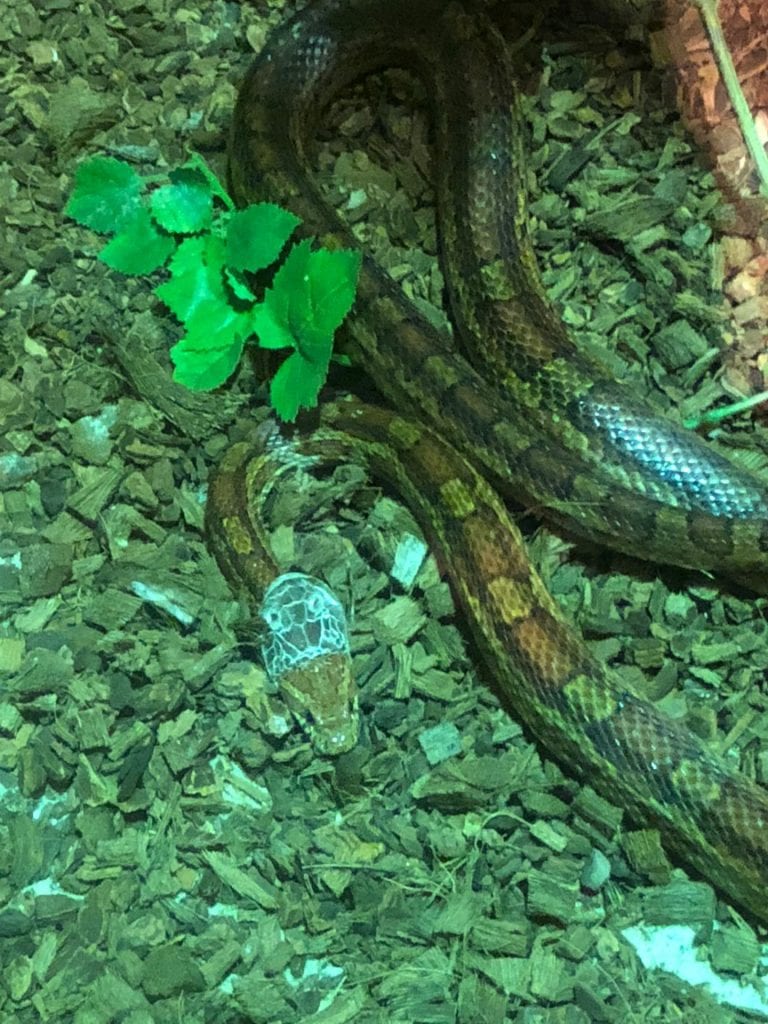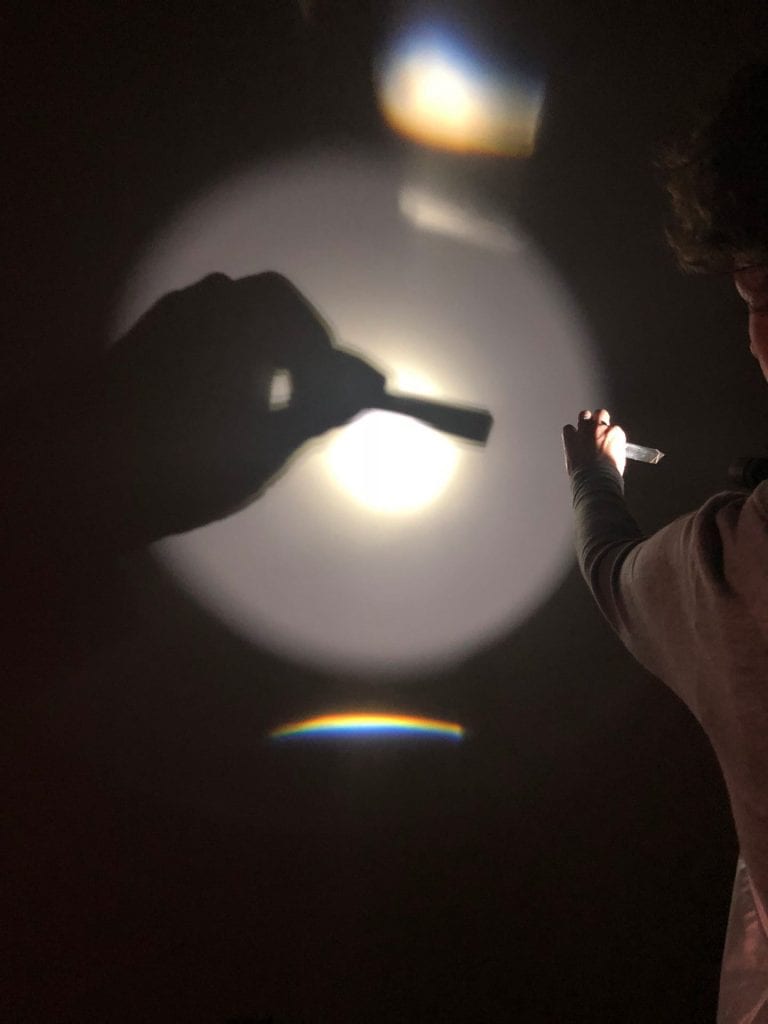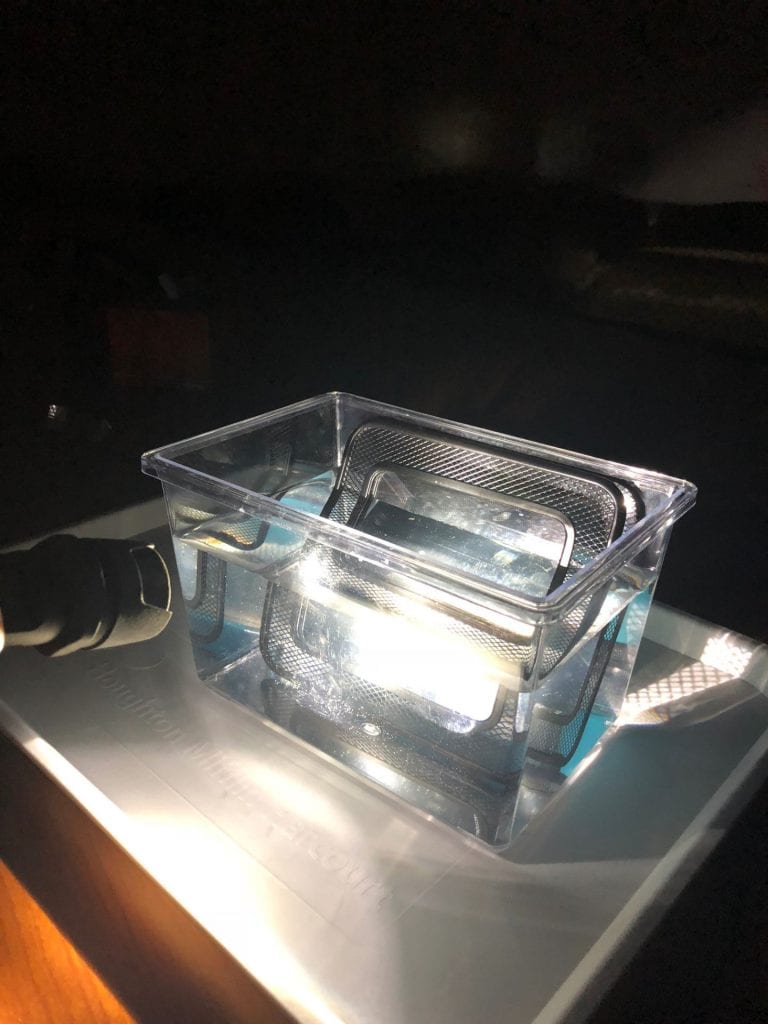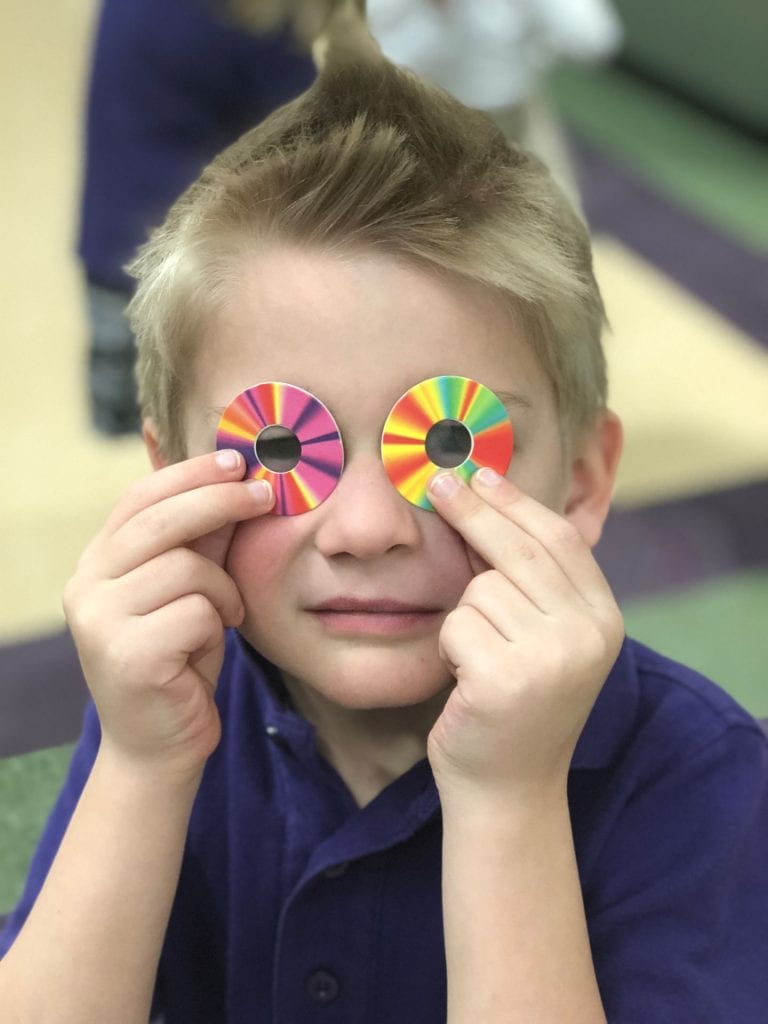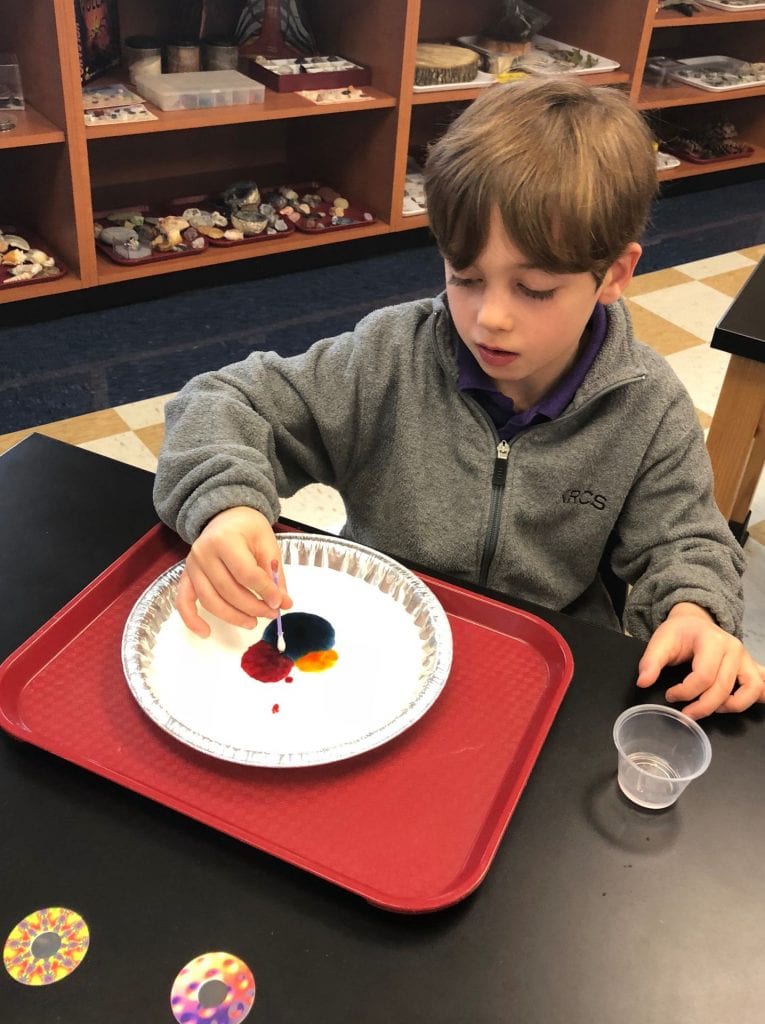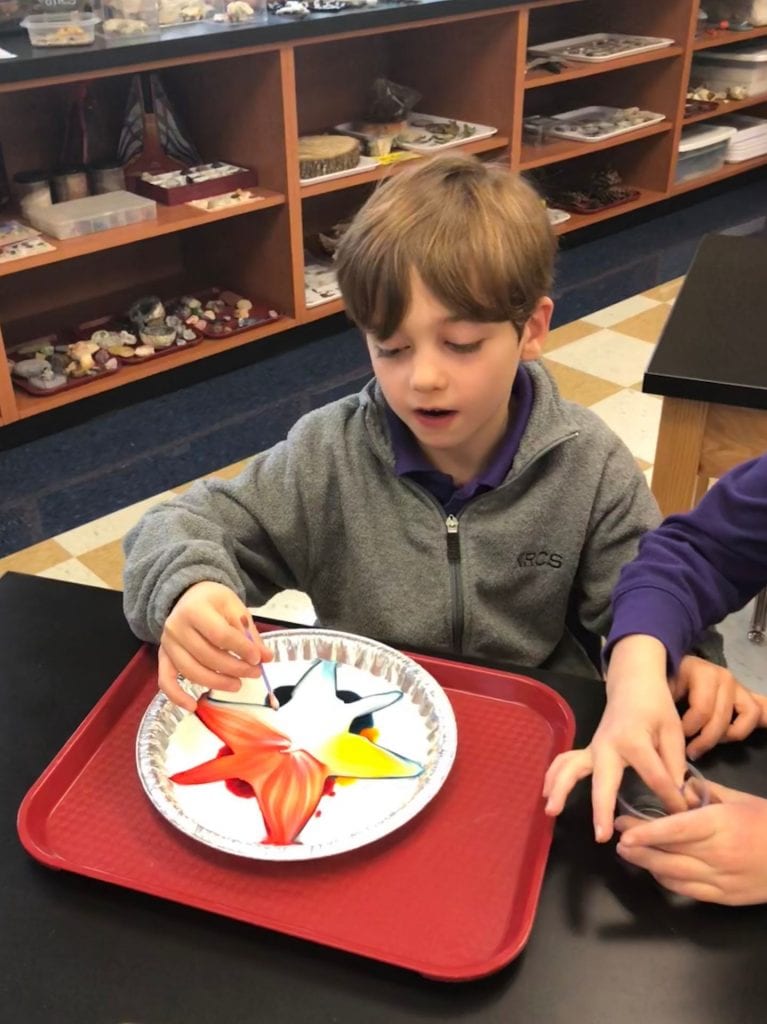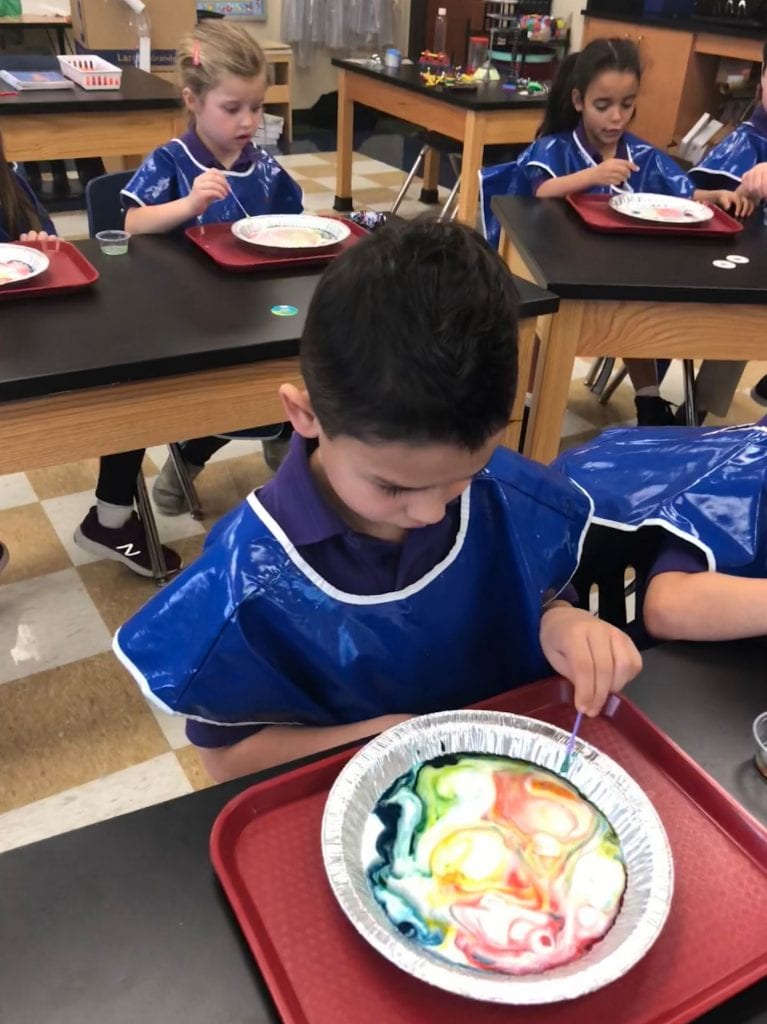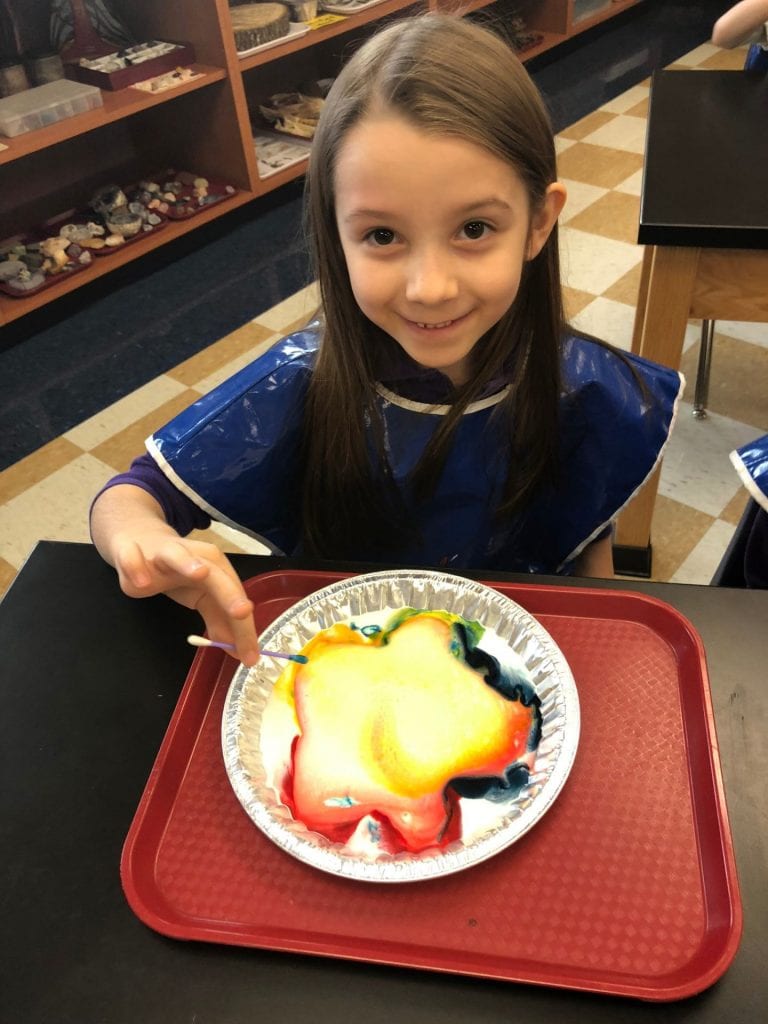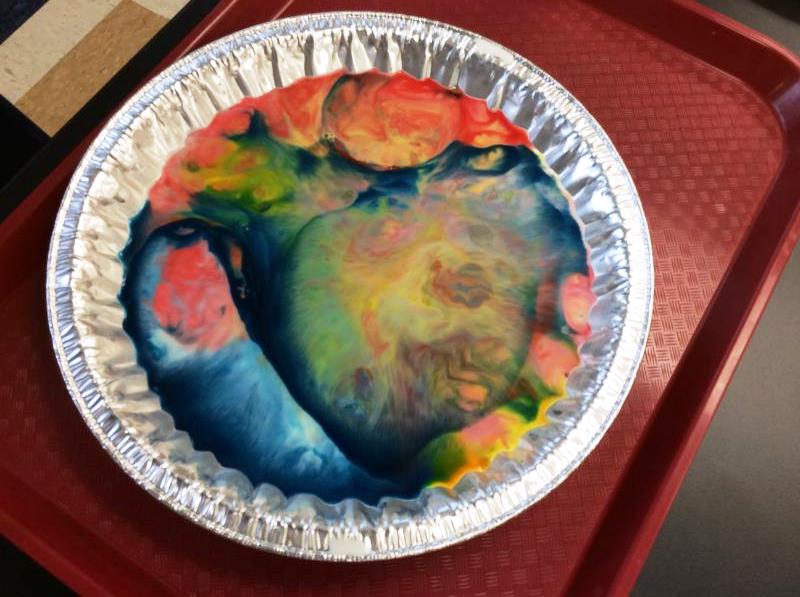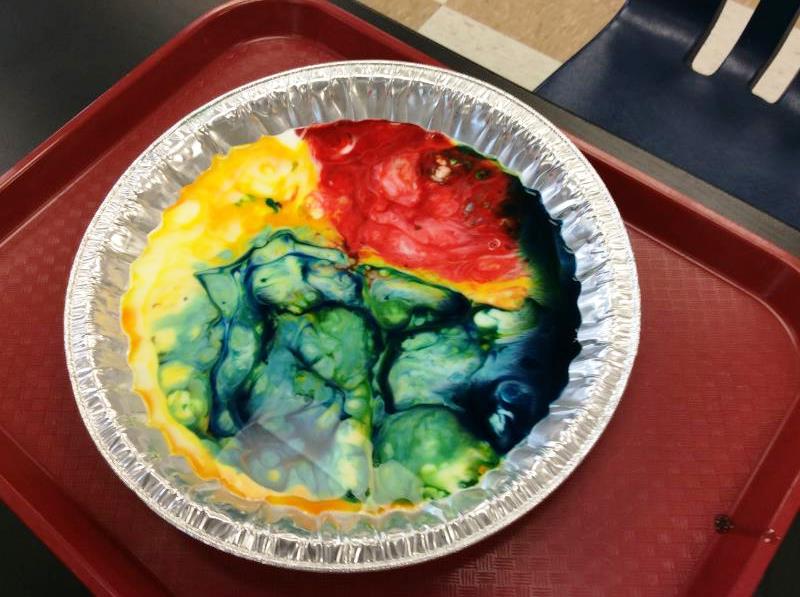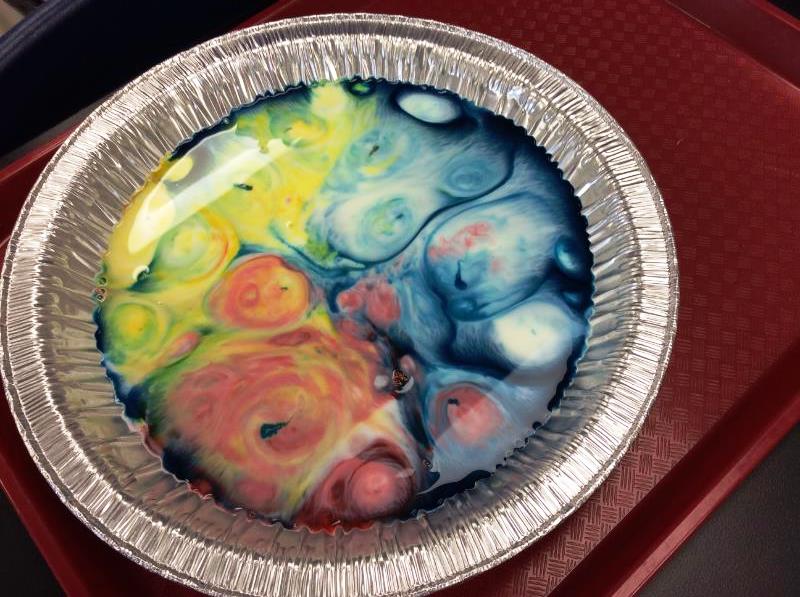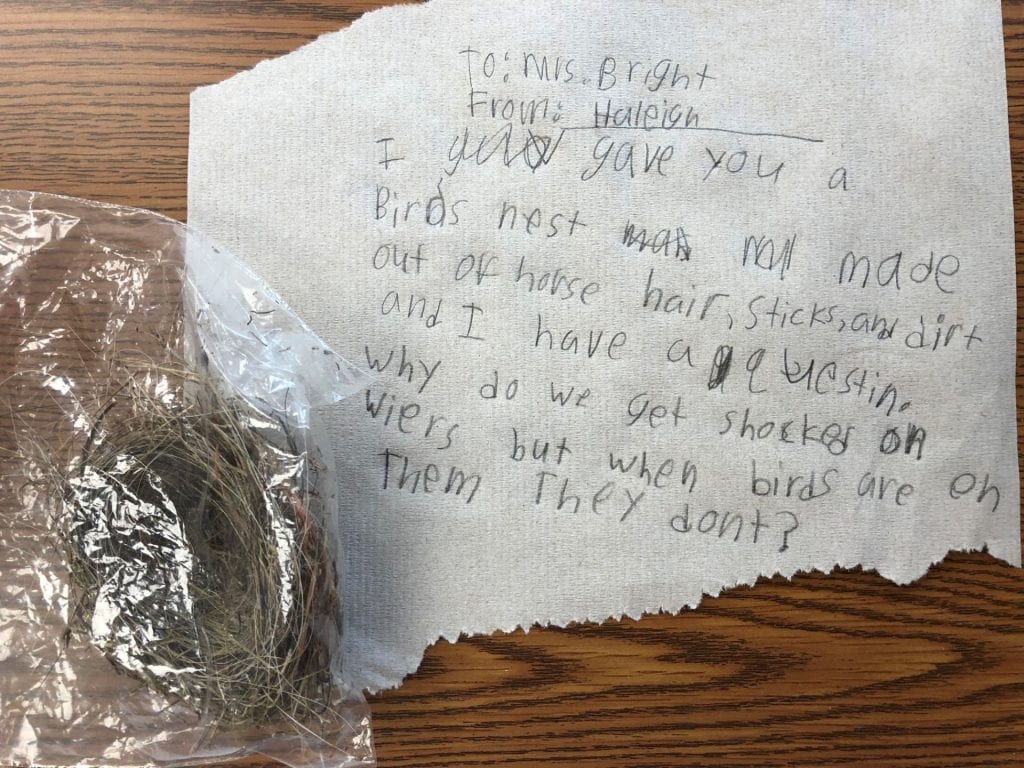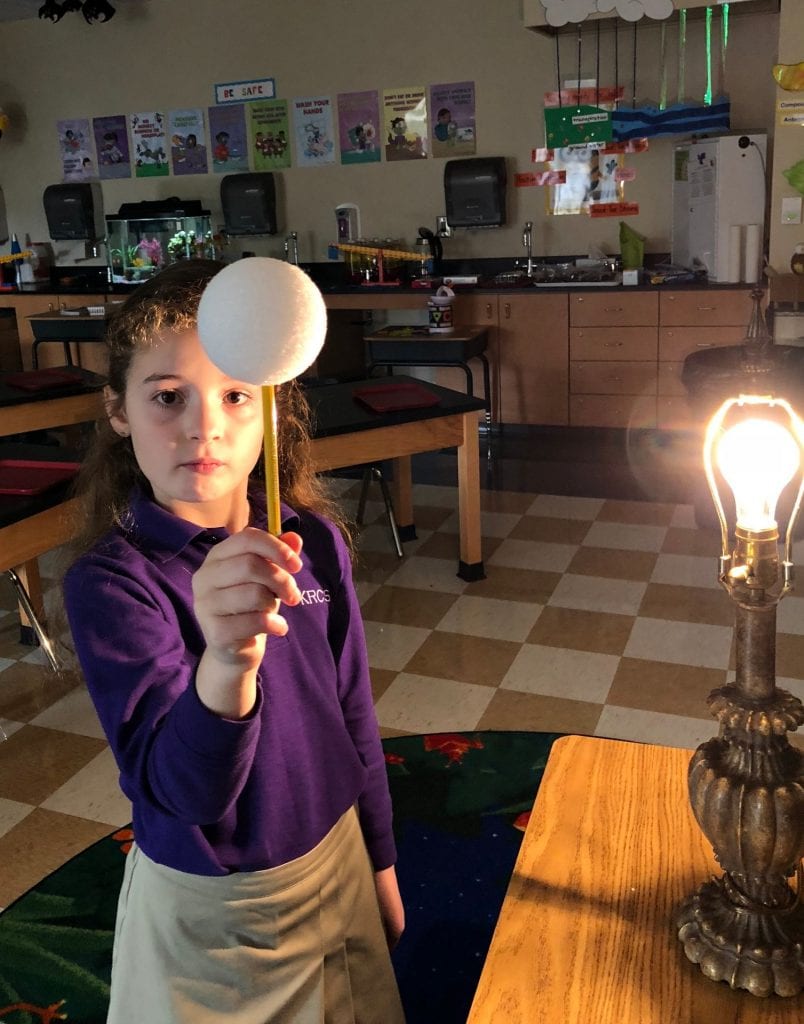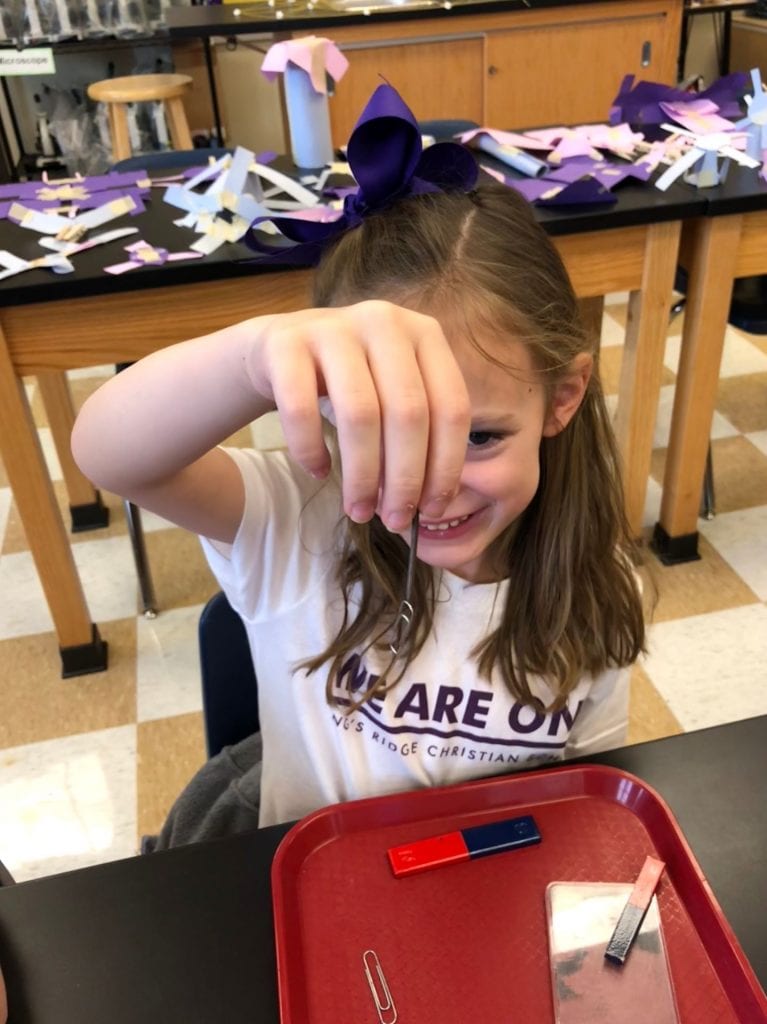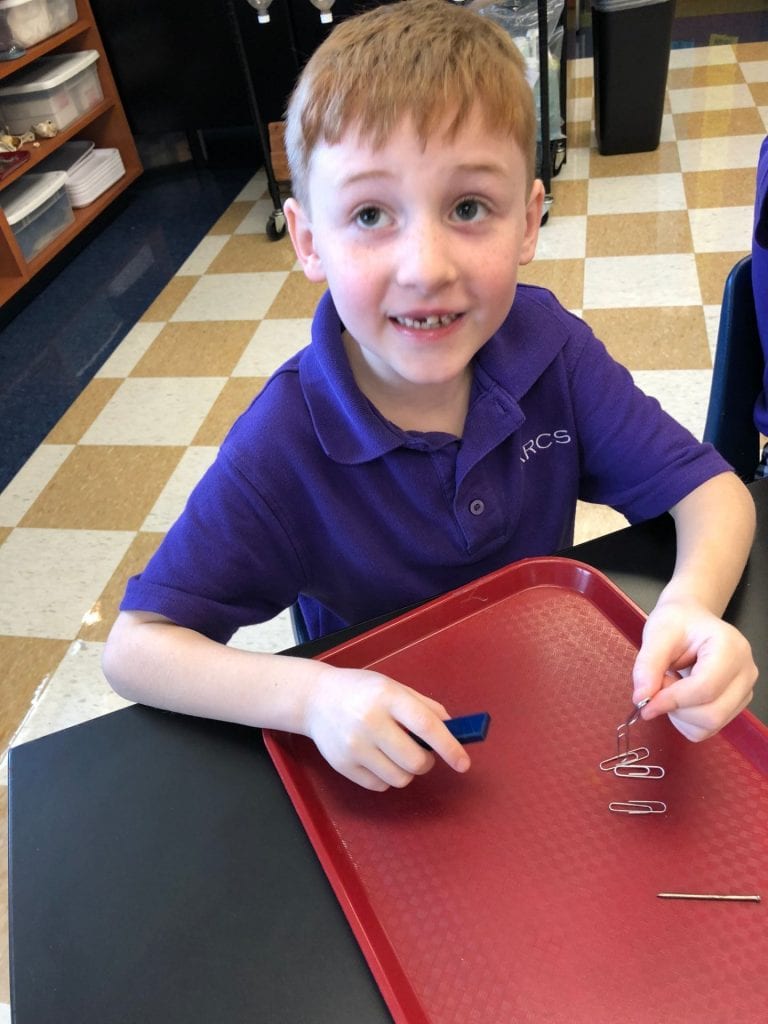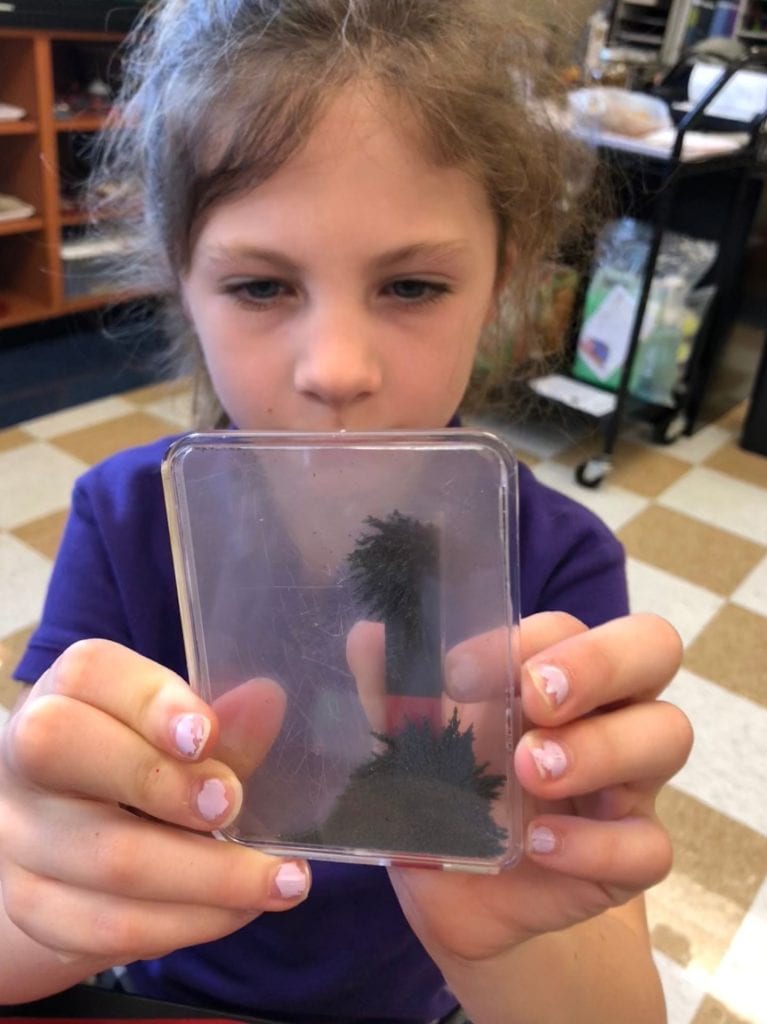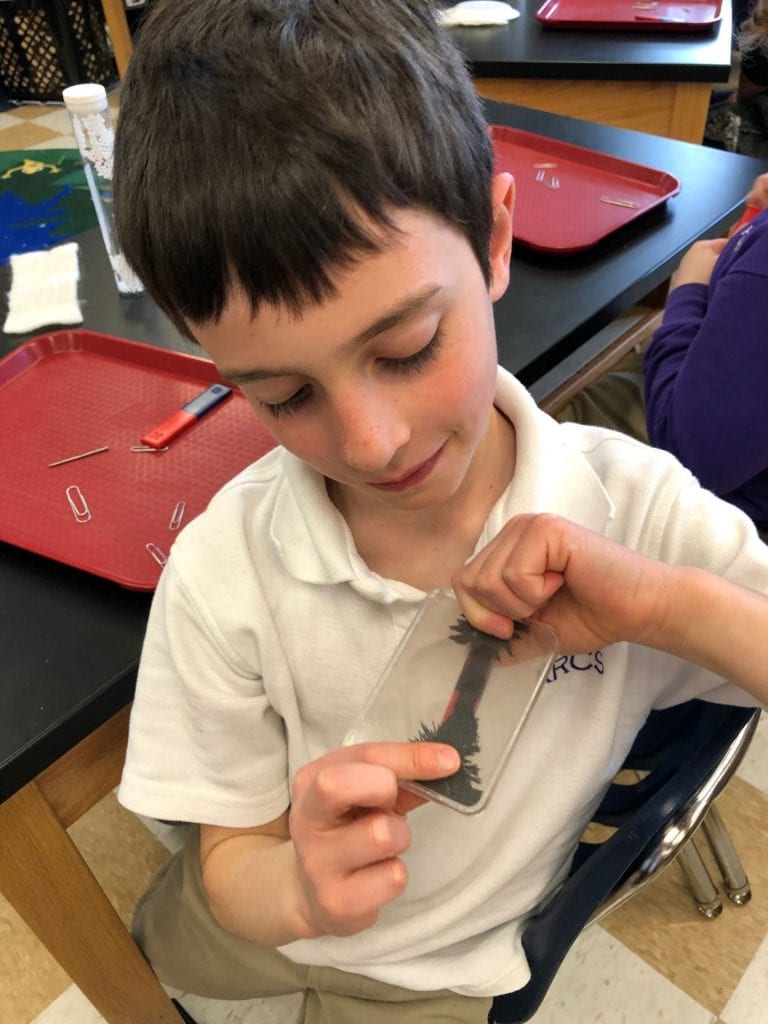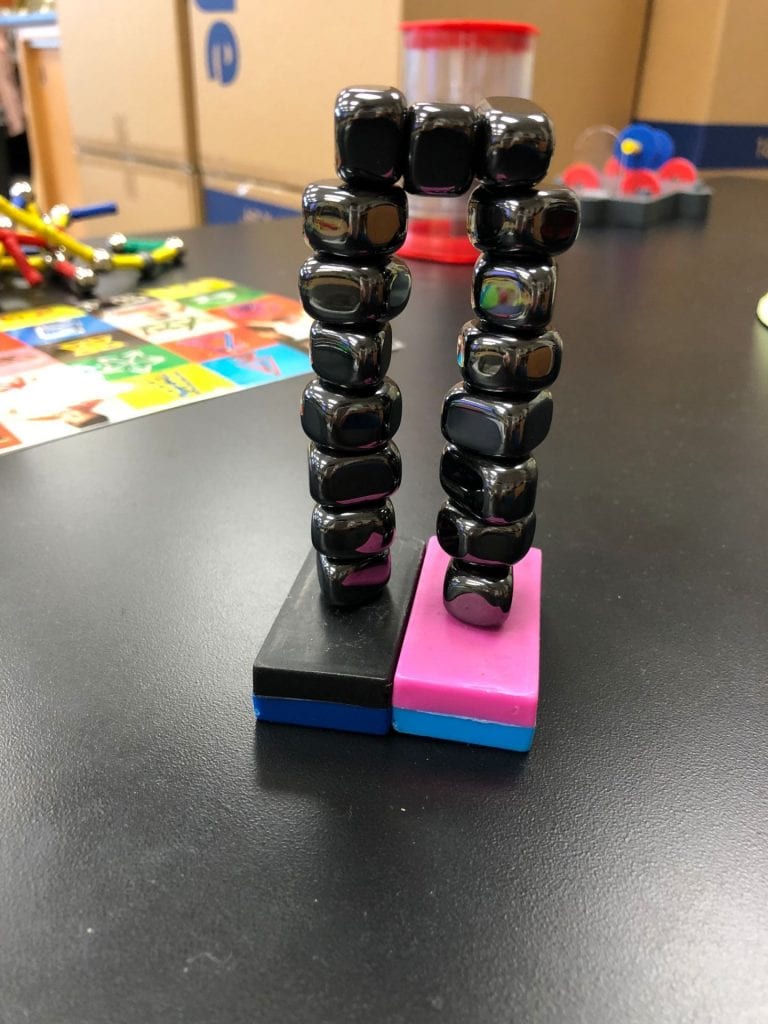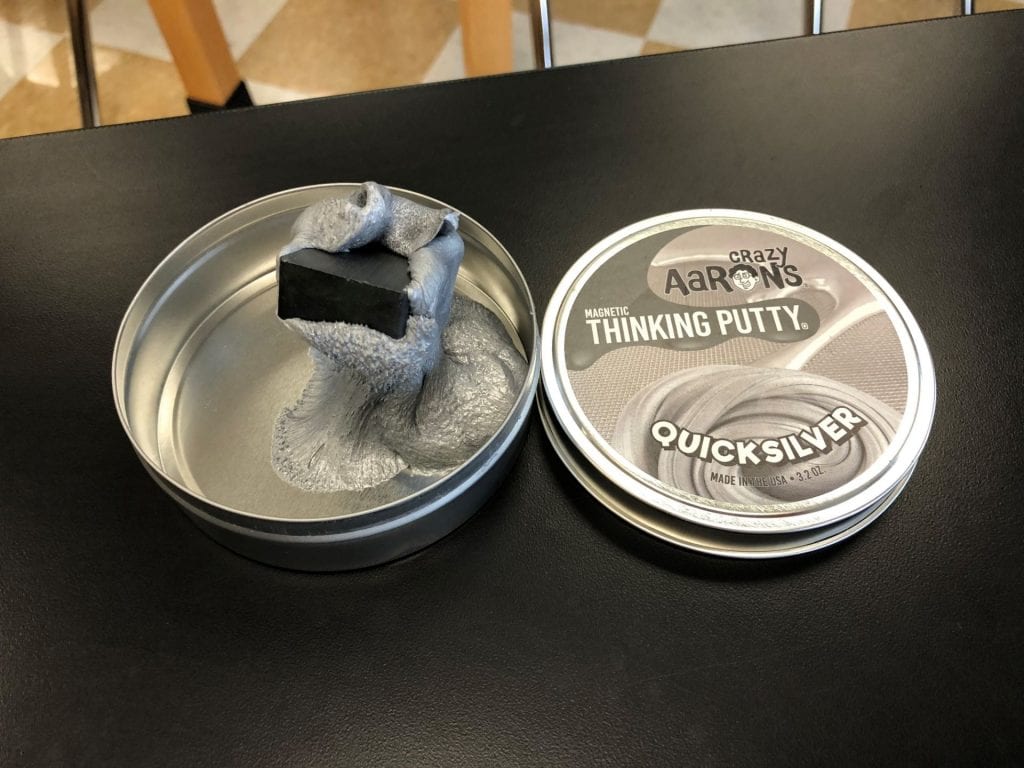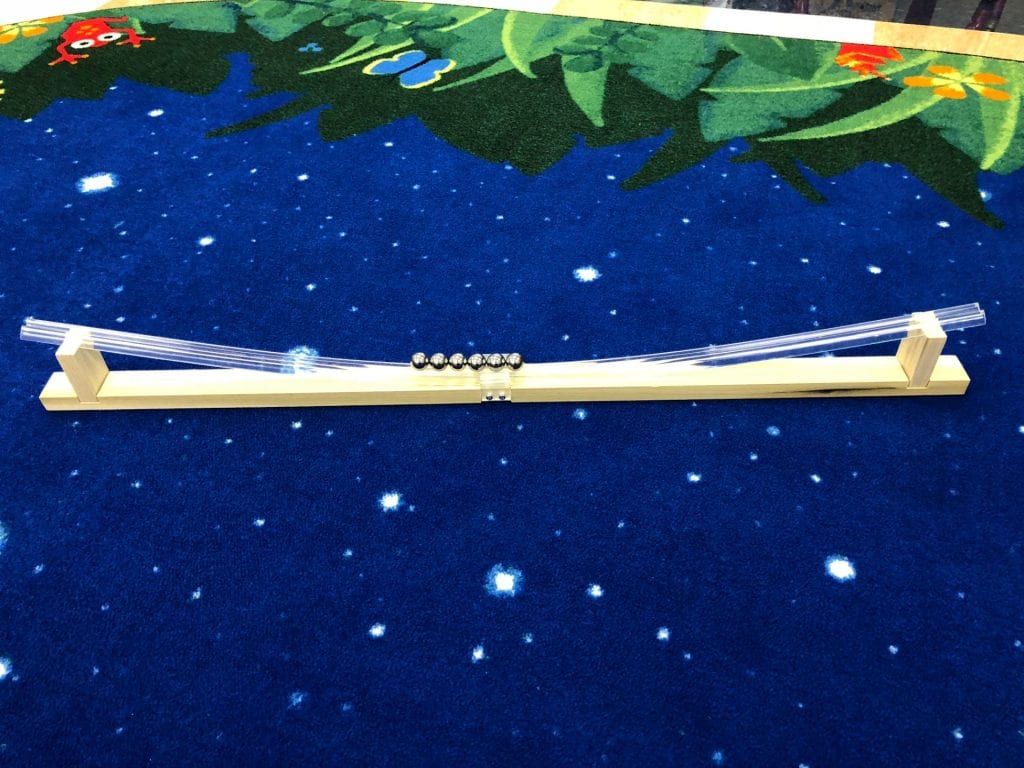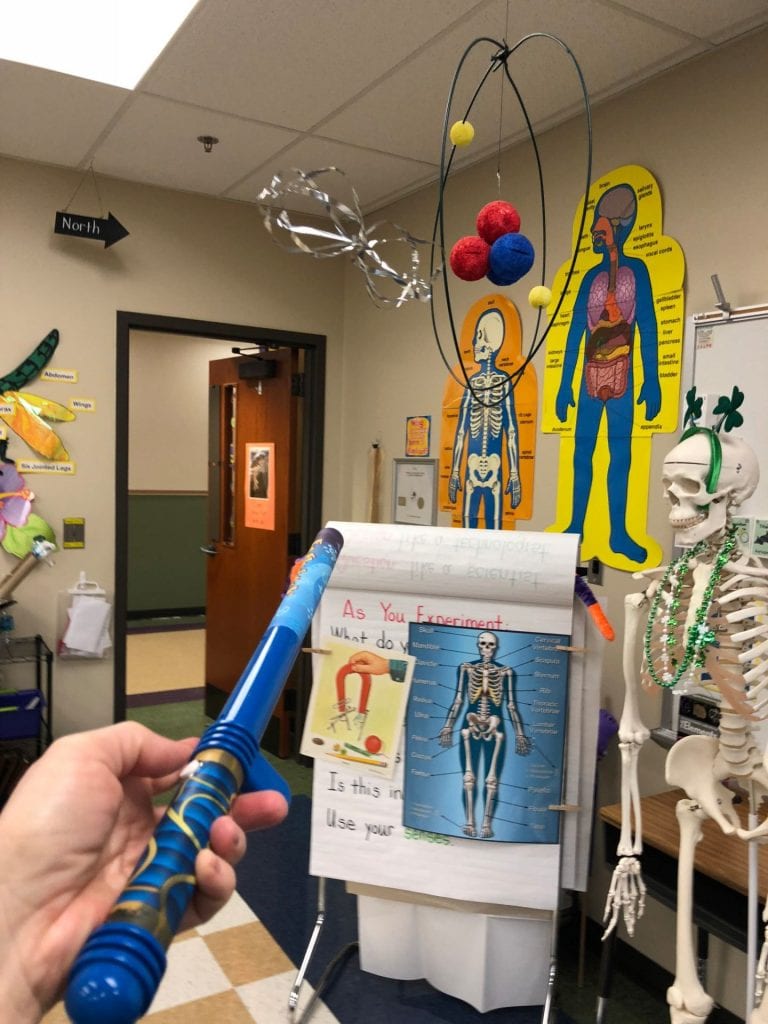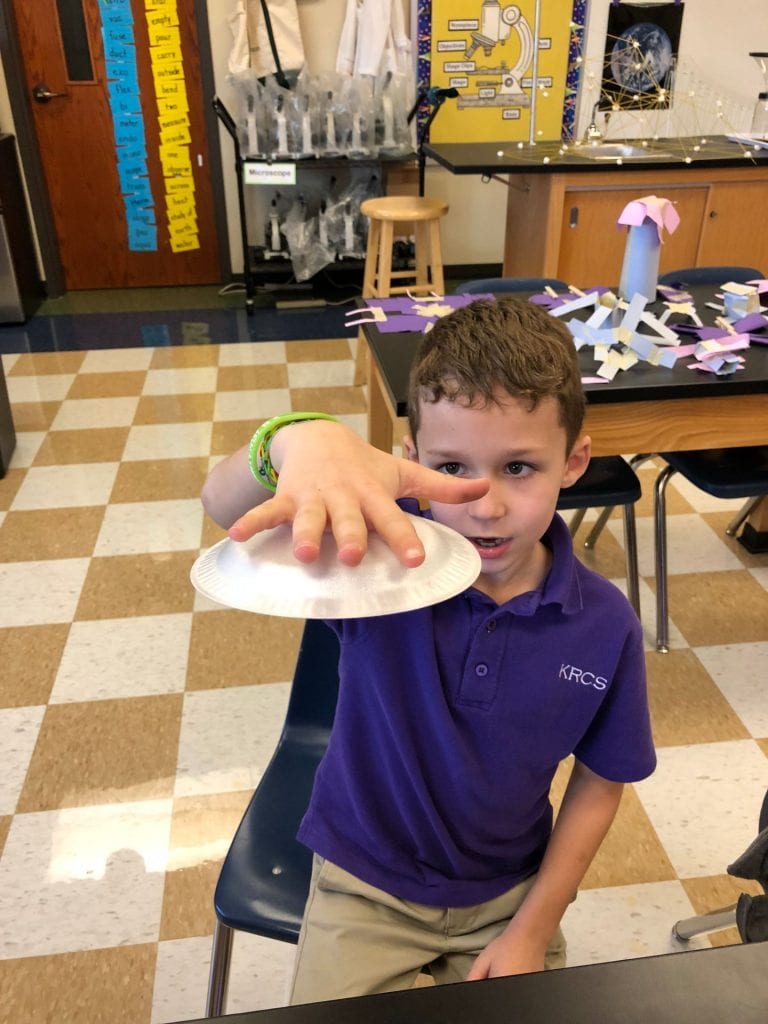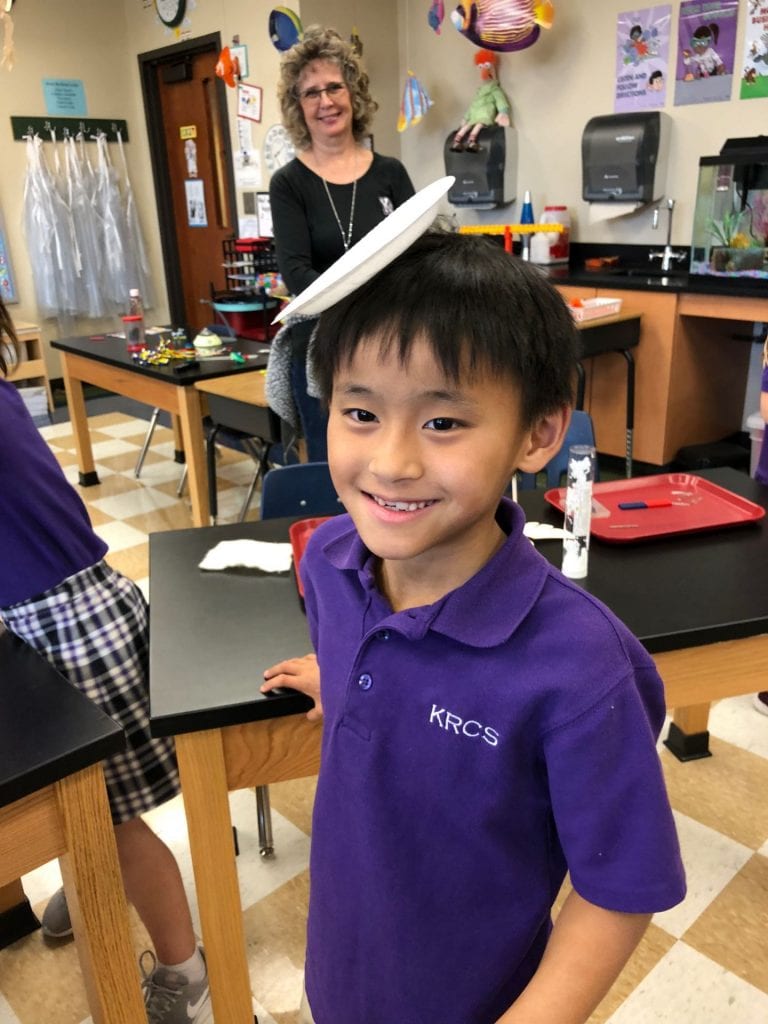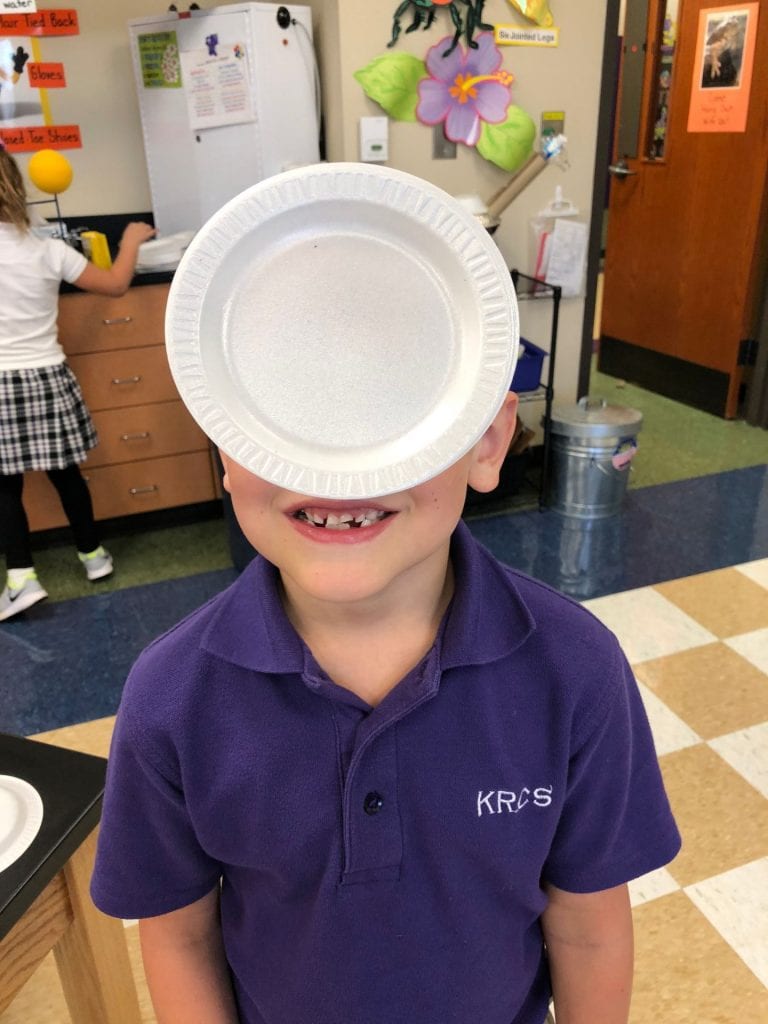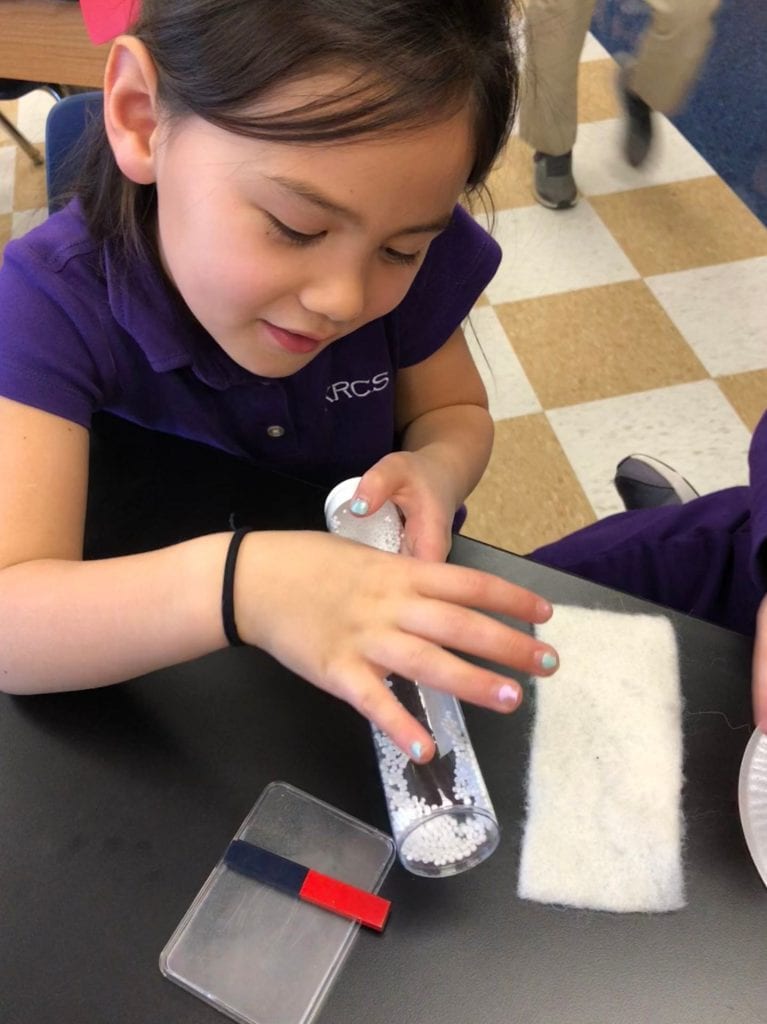Family Fun Day at CNC
Rainbows
My kindergarten scientists are studying rainbows. Both water and prisms can open (refract) light to reveal the colors hidden inside.
We had fun using rainbow peeps. Rainbow Peepholes allow you to see secret rainbows that you normally can’t see. The special lenses in the middle of the peepholes are designed to refract light creating hundreds of rainbows as you gaze through them.
We ended this rainbow lab with an investigation. I dropped red, yellow, and blue food coloring into a pie plate filled with whole milk and the colors didn’t move. Why? Then, my scientists dipped a Q-tip into dish washing soap, placed it between the colors in the pan, and watched the colors explode! Why did that happen? How did we make green, purple, and orange?
Click here to learn more about this experiment. Try this at home!
Thinking Like a Scientist
I encourage my scientists to ask questions about what they wonder. Everything about this note, left on my desk, makes me happy!
Birds don’t get shocked when they sit on electrical wires because they are not good conductors of electricity. Birds do not offer electrons an easier route than the copper wire they’re already traveling along. As a result, the electricity bypasses the birds and keeps flowing along the wire instead.
Moon Phases
Magnet – Part Four
A paper clip cannot attract another paperclip, or can it?
My first grade scientists discovered that it’s possible to make a temporary magnet if you rub a paper clip or a nail in one direction alongside a bar magnet.
We also used a bar magnet and a case of iron filings to see the magnetic field. Magnets are strongest at their poles.
I spent a few moments sharing some magnetic manipulatives that can be found in the lab.
Sticky Stones
Magnetic Putty
Magnetic Accelerator
Magnetic Levitator
Then it was time to investigate a new force that can also repel and attract – static electricity. Everyone was fascinated with these fun fly sticks. Click here to learn more.
After rubbing the Styrofoam plate with a piece of wool, it seemed to stick to our hands like magic and we could move the Styrofoam balls without touching the tubes.
